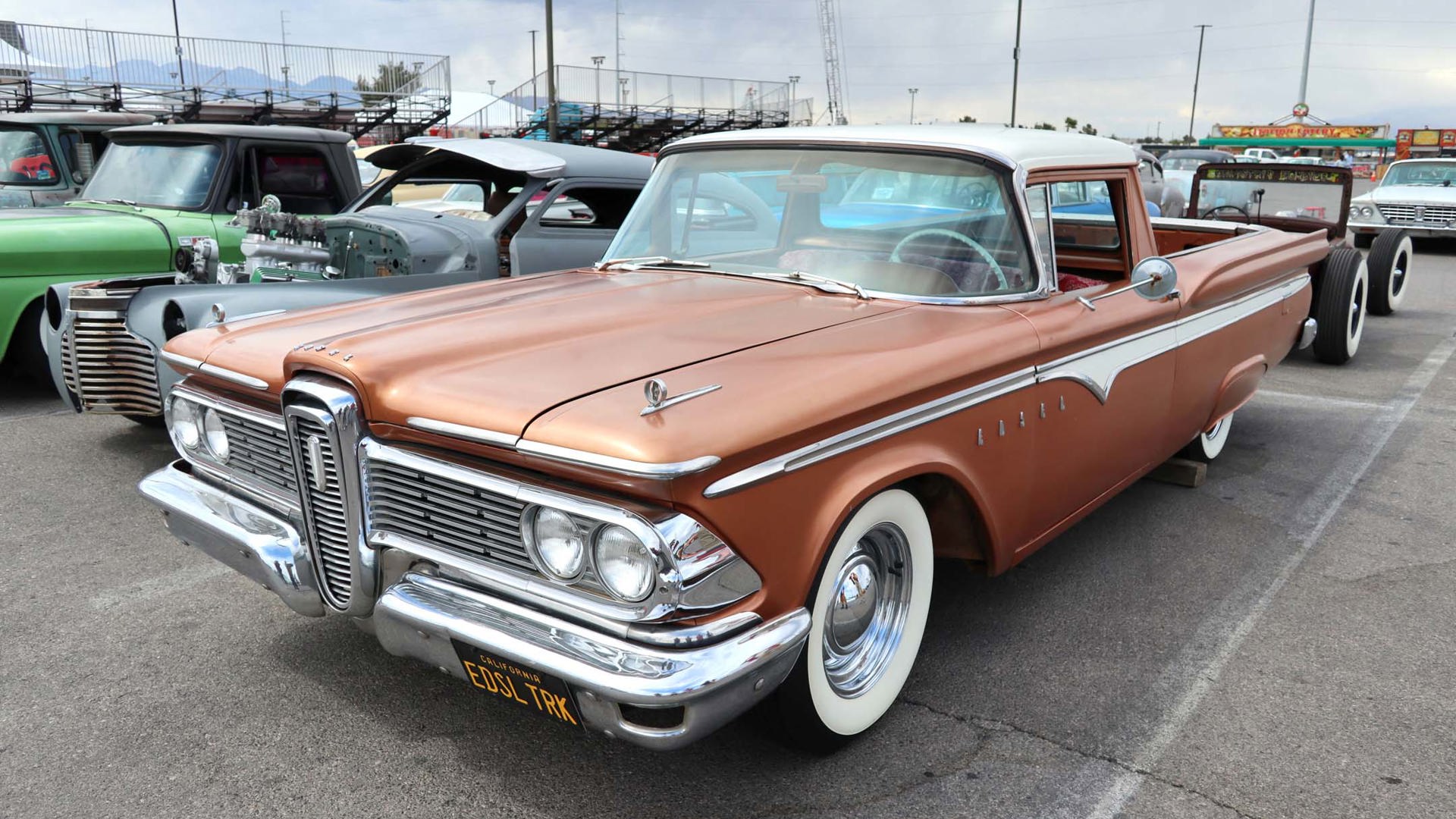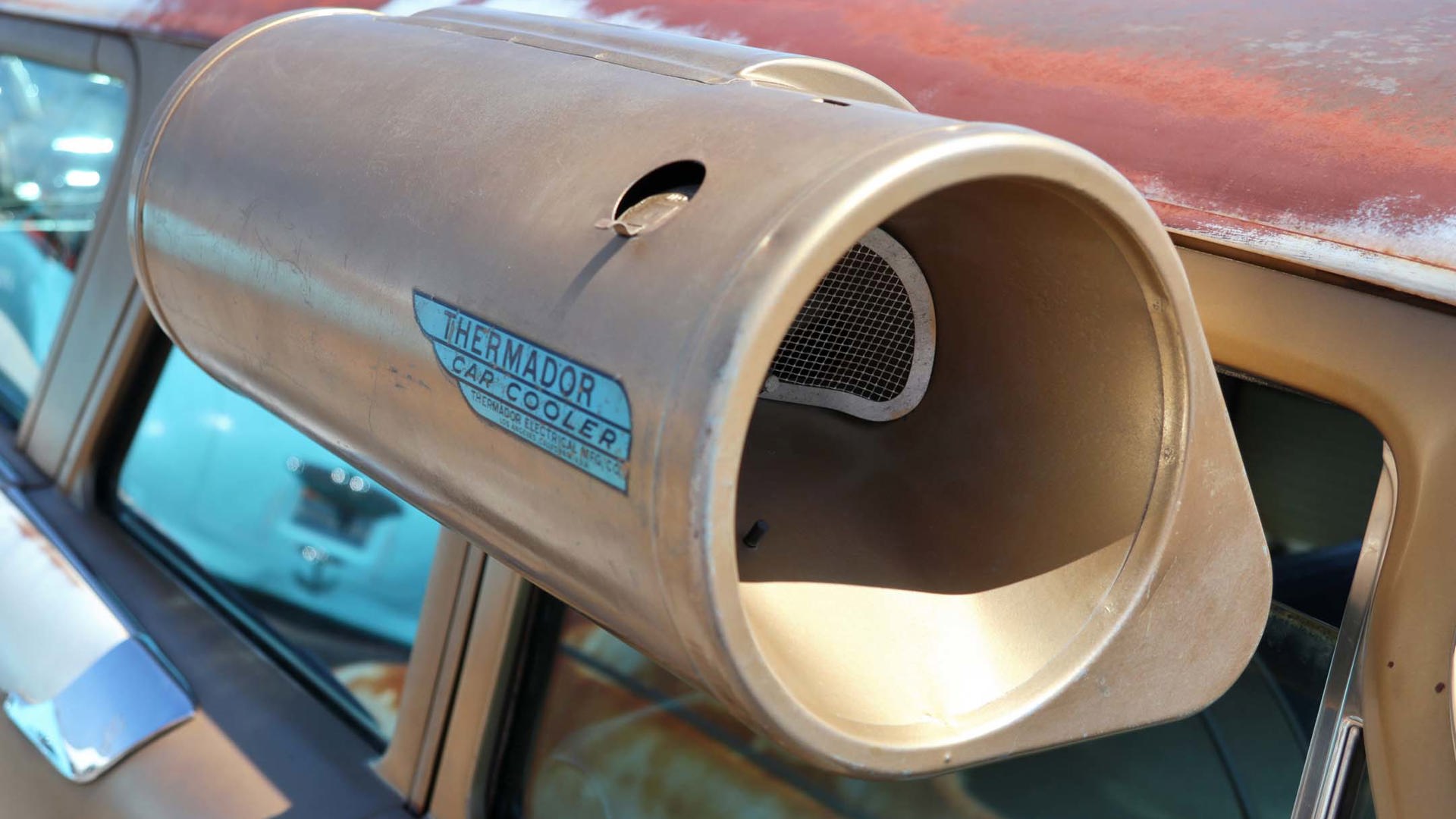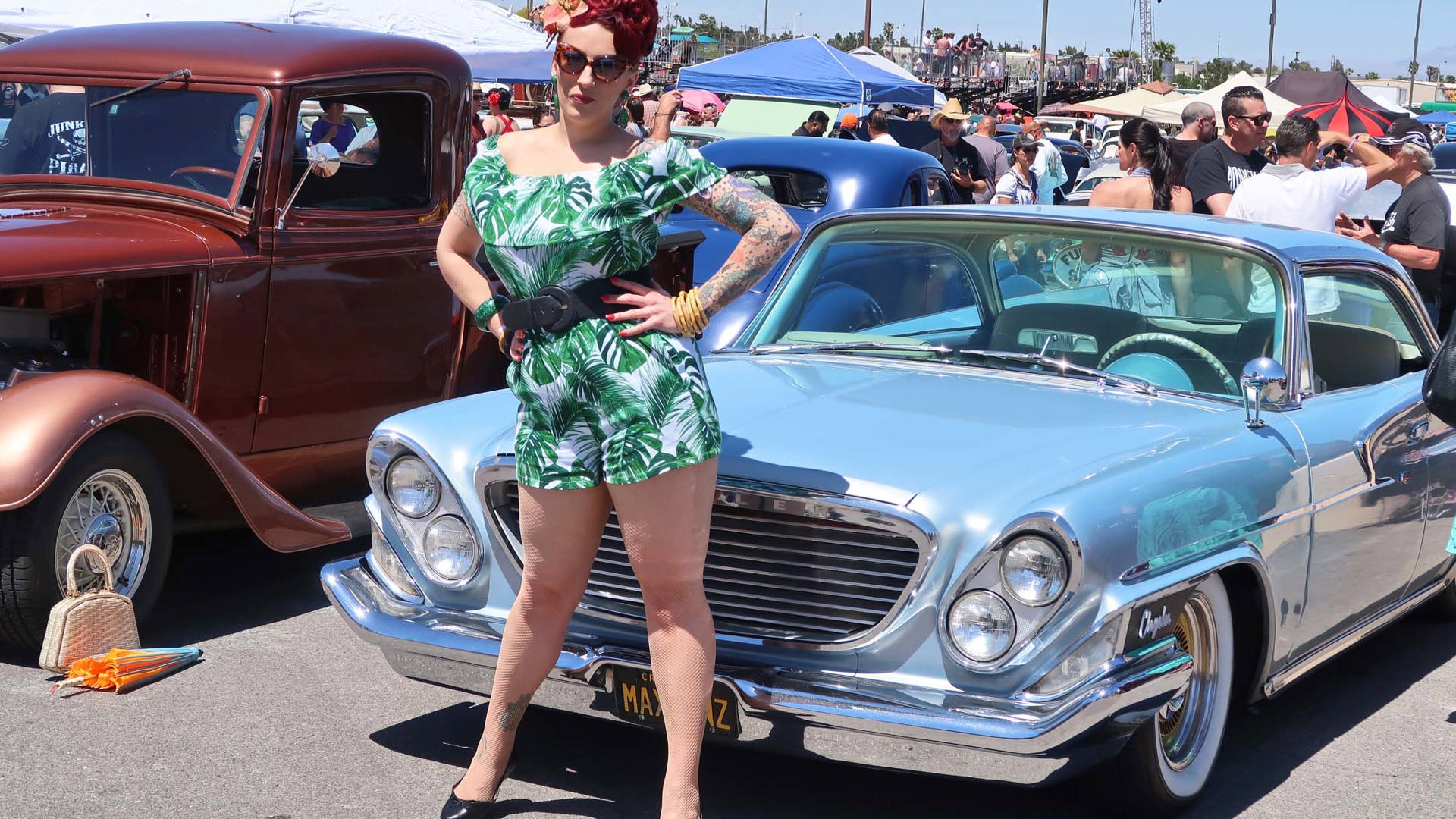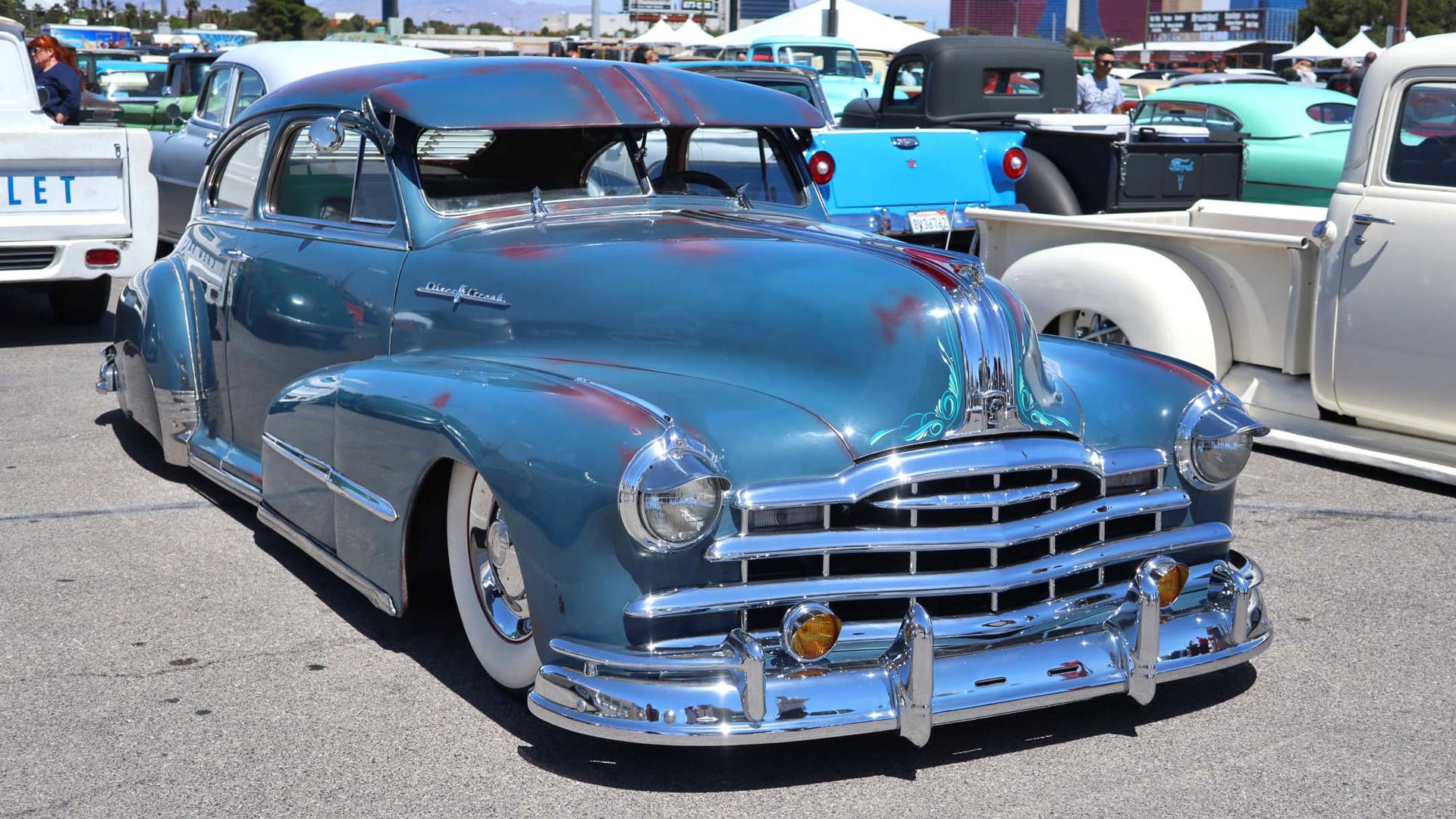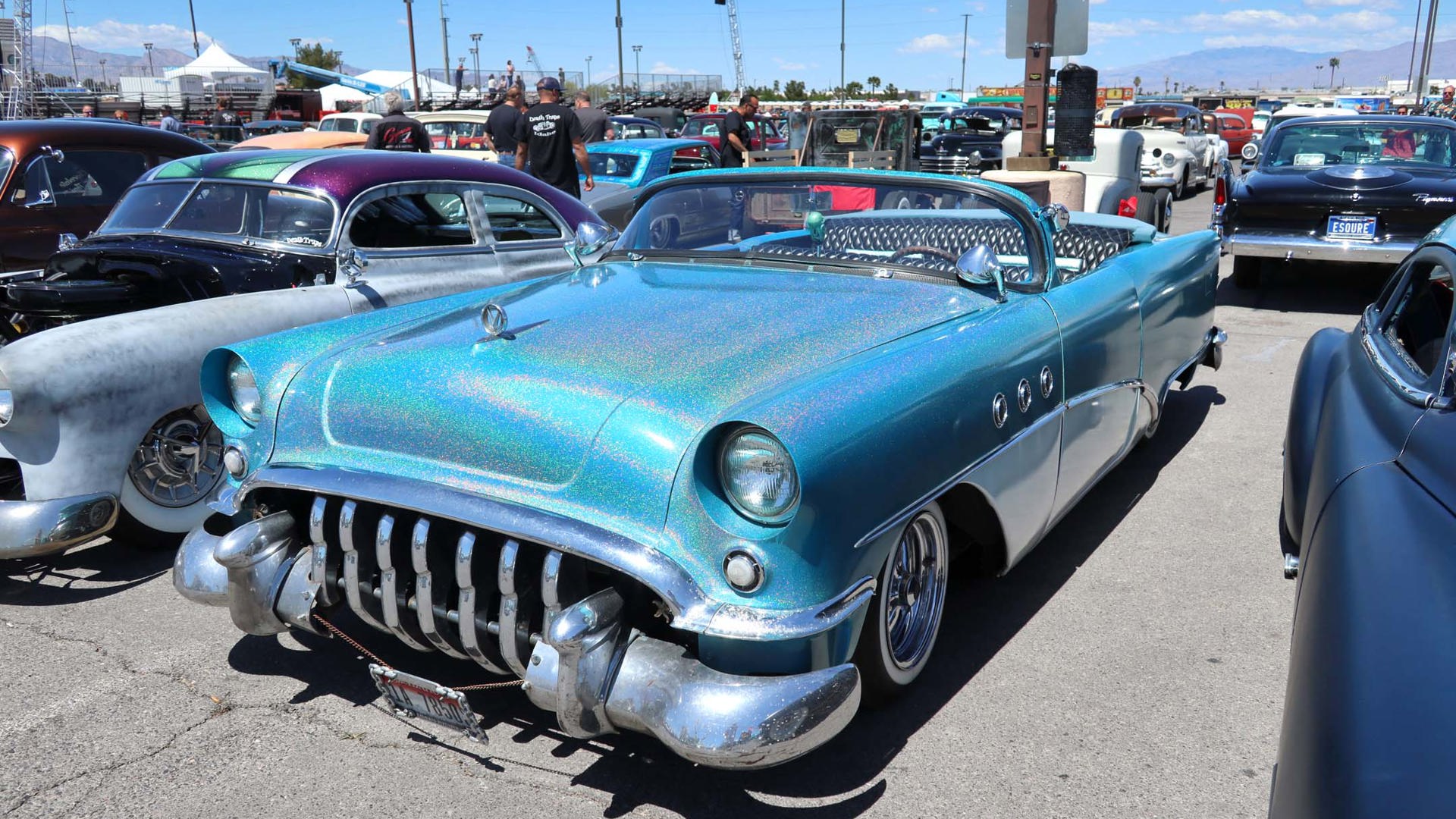LAS VEGAS – A pinstriped ’49 Mercury with its bumper almost scraping the ground cruises into its parking spot. Jerry Lee Lewis is up on a nearby stage, banging out a song. A heavily tattooed couple dressed in 1940s clothes dances on the asphalt.
Welcome to Viva Las Vegas.
Now in its twenty-first year, the show is primarily a rockabilly music festival, drawing devotees from around the world. But since music and cars were meant for each other, there’s a massive car show attached.
Never heard of rockabilly? Its golden era was brief – only about five years or so in the 1950s – but it was a vital component of the rock and roll that followed it. As television gained ground, it began showing the comedies and dramas that used to only be on radio. Losing those shows, radio now turned to music, introducing the blues and gospel music of black artists to a new audience. Young white artists, mostly in the rural South, blended it with western swing, boogie-woogie, and honky-tonk to create a raw new sound.
Think Elvis in his earliest Sun Records days, Carl Perkins, Johnny Burnette, Sonny Burgess, Wanda Jackson, or Eddie Cochran.
Niche, but global appeal
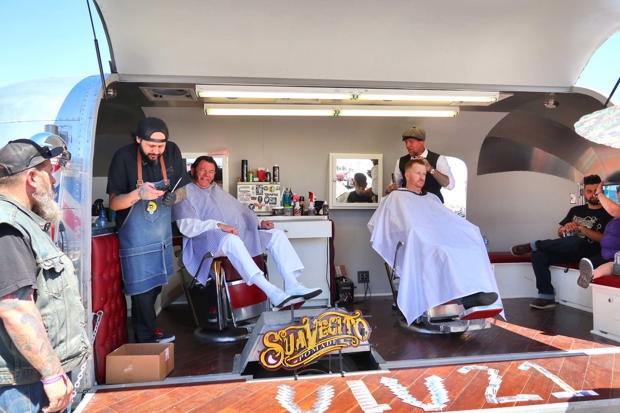
It’s still a niche sound, but its popularity is widespread, and you hear a dozen languages at the show. There are devotees from England and Germany, where it’s mostly about the music, and from Scandinavia and Japan, where they can’t get enough of huge American cars, and they make the trek – some of them every year – to the Vegas event, where the live acts start playing before breakfast and run almost through until dawn the next day.
Many of its fans also dress the part (and for many it’s not a costume, but a 24/7 lifestyle), but you don’t see the poodle skirts and bobby-sox of those at many ’50s car shows who emulate the teenage styles of American Graffiti. These folks dress as sexy adults of the 1940s and 1950s, the women in pin-up costumes and intricate hairstyles that take hours to do, and the men in pompadours and peg-leg pants. Most are heavily tattooed, and along with vintage-clothing vendors and mobile barbers, there’s a tattoo parlour manned by numerous artists set up in the casino’s bowling alley (and yes, I got some new ink there too).

Twirling their parasols and teetering on their heels, the women come into the car show, posing for photos in front of the cars. And what cars they are.
A car must be indicative of the 1950s era to get into the show, and they’re a virtual history lesson of how hot rods and custom cars came about. Soldiers returning from the Second World War weren’t content to go back to a mundane lifestyle, and they took the wraps off the 1930s coupes and roadsters they’d put in storage, dropped newer engines into them, and took them racing on the salt flats – and there are plenty of these “hopped-up” models on display.
There are beat-up trucks like the farm boys drove into town on a Saturday night to hear this new music. In Los Angeles, young men in the Mexican communities took big land yachts and put them on hydraulic suspensions to create lowriders, while family men took their 1940s sedans, dropped the ride height, and added visors, pinstriping, and accessories to build “bombs.” If you raised a car’s front end and dropped the rear so the bumper almost touched the ground, you had a “taildragger”. And all of them are here.
Lace paint, Canuck plates

Some cars are in primer, either getting ready for paint or staying that way; some have elaborate metal-flake finishes popularized by the big-name custom-car builders of the day; and some feature painstaking paint jobs made by shooting and then masking the paint, over and over, to block off lines of colour. Putting down some lace – yes, like from your grandma’s cupboard – and then painting over it and pulling it away to reveal the design was a hot ticket back in the day, and a few cars here have this “lace paint” scheme.
There are car clubs out in full force, with names like the Throttle Kings, the Dead Sleds, the Sin City Jokers, and the Dragstrip Zombies. There are hearses and ambulances, delivery trucks and vintage trailers.

The plates are from all over, and four from Canada, including a 1959 Chevrolet Nomad from British Columbia; 1926 Ford and 1953 Chevrolet from Alberta; and 1957 Cadillac from Ontario (shipped to the show from our garage back home).
It might have started as a music festival, but Viva Las Vegas is now just as much about the cars as well, and it all came together on Saturday night, when the entire crowd came to a stage in the parking lot to see Jerry Lee Lewis, Duane Eddy, and a reunion of the Stray Cats.
Rockabilly might not have lasted long in its earliest days, but thanks to this, it’s going to be around forever.
















